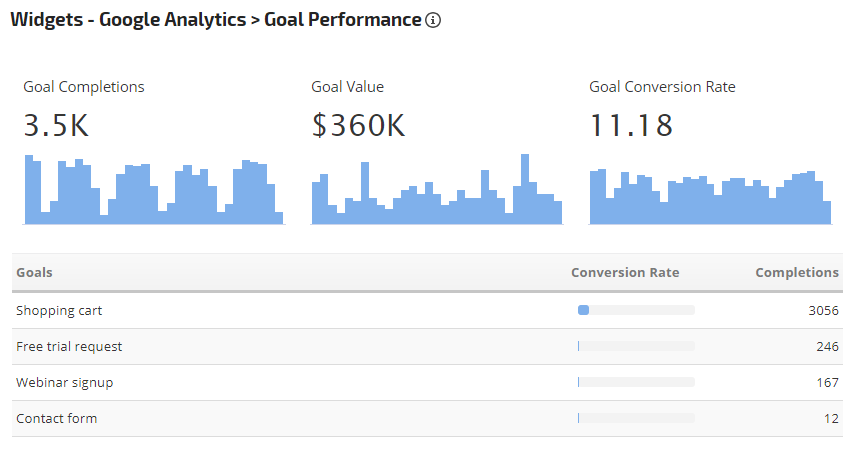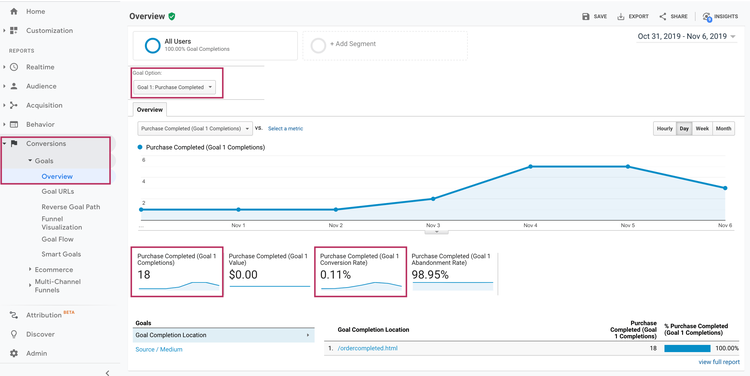What Data Is Google Analytics Goals Unable to Track: Critical Details
What Data Is Google Analytics Goals Unable to Track: Critical Details
Blog Article
Discover the Limitations of Google Analytics Goals: Unveiling the Information Kind That Remain Untrackable
As businesses progressively count on data-driven decision-making, recognizing the restrictions of devices like Google Analytics comes to be vital. While Google Analytics Goals offer beneficial understandings right into individual communications, there exist information kinds that elude tracking, positioning challenges to a thorough understanding of user behavior.
Incomplete User Journey Tracking
Incomplete individual journey monitoring within Google Analytics can prevent the capacity to properly evaluate user behavior. When the user journey is not completely tracked, there are spaces in the data that protect against a comprehensive understanding of exactly how customers engage with a site. This lack of insight can result in missed possibilities for optimization and renovations to the customer experience.
One usual issue with insufficient user journey monitoring is the lack of ability to see the complete course that customers take previously finishing an objective or leaving the website. Without this details, it is testing to recognize where customers might be encountering barriers or rubbing points that prevent them from transforming. In addition, incomplete tracking can cover the influence of particular advertising and marketing initiatives or site modifications on individual behavior.
To resolve this limitation, it is essential to establish appropriate tracking systems within Google Analytics to capture the entire customer trip. This may entail establishing up event monitoring, objective funnels, or utilizing devices like Google Tag Supervisor to guarantee that no vital interactions go unrecorded. By acquiring a comprehensive sight of the customer journey, site proprietors can make more enlightened decisions to boost individual engagement and drive conversions.
Attribution Challenges
Navigating via acknowledgment challenges in Google Analytics needs a detailed understanding of how different touchpoints add to the general conversion procedure. Attribution obstacles occur from the intricacy of contemporary consumer journeys, where individuals interact with numerous networks before transforming. Google Analytics offers numerous attribution designs like very first touch, last touch, and straight, each using a different perspective on how credit history is appointed to touchpoints along the conversion course. These versions may not constantly accurately mirror the true effect of each touchpoint on the conversion.
One usual attribution obstacle is the trouble in associating conversions to the proper source, specifically in instances where users engage with multiple networks before transforming. Furthermore, cross-device tracking postures one more attribution obstacle, as customers commonly switch in between gadgets during their trip, making it testing to track their interactions seamlessly.
Offline Conversions
Provided the obstacles connected with attributing conversions properly in online channels, the measurement of offline conversions presents a substantial chance for online marketers seeking an extra detailed understanding of their clients' trip. Offline conversions refer to activities that clients take in the physical world, such as making acquisitions in brick-and-mortar shops or over the phone, going to occasions, or engaging with printed products - what data is google analytics goals unable to track. These conversions are vital for organizations that operate both online and offline, as they give beneficial insights right into the performance of marketing projects across numerous touchpoints
Tracking offline conversions commonly postured a substantial navigate to these guys obstacle for online marketers, as it was testing to connect these activities back to particular on the internet communications properly. With developments in you could try this out innovation, such as the combination of CRM systems, distinct identifiers, and voucher codes, services can currently bridge the void in between online and offline data to acquire a more holistic view of customer actions. By effectively gauging offline conversions, marketing professionals can enhance their methods, allot sources a lot more effectively, and eventually improve the overall consumer experience.
Cross-Device Monitoring
Cross-device monitoring plays a critical role in comprehending the interconnected nature of consumers' electronic communications throughout multiple tools. In today's omnichannel world, where customers seamlessly switch over between tablet computers, smartphones, and desktops, tracking their habits throughout these devices is necessary for marketers to obtain an extensive sight of their consumer journey.

In addition, privacy problems and guidelines such as GDPR and CCPA have additionally difficult cross-device tracking. With customers requiring even more control over their information and boosted limitations on tracking technologies, marketers should discover innovative and privacy-compliant ways to connect individual interactions throughout gadgets.
Dynamic Material Interaction
Recognizing user engagement with vibrant web content is critical in optimizing digital marketing strategies for enhanced target market interaction. Dynamic web content refers to internet site elements that transform based on individual actions, preferences, or various other variables, supplying a personalized experience. Nevertheless, tracking user communications with dynamic material positions challenges for conventional analytics tools like Google Analytics.
While Google Analytics can track fundamental communications like clicks and web page views, it might have a hard time to record even more nuanced engagements within vibrant material. what data is google analytics goals unable to track. Metrics such as time invested in particular dynamic aspects, hover actions, or communications within pop-ups are usually not conveniently measurable making use of typical monitoring approaches. This constraint prevents online marketers' ability to completely comprehend exactly how customers are involving with vibrant material and tailor their approaches accordingly

Final Thought
In verdict, Google Analytics objectives have restrictions in tracking insufficient customer trips, connecting conversions precisely, recording offline conversions, tracking cross-device communications, and gauging vibrant material interaction. These restrictions highlight the significance of exploring additional monitoring approaches and tools to get an extra extensive understanding of customer actions and conversions past what Google Analytics can give.
While Google Analytics Goals offer useful understandings right into individual communications, there exist data kinds that thwart monitoring, positioning challenges to a detailed understanding of customer habits.Insufficient user trip monitoring within Google Analytics can impede the capability to precisely examine individual behavior. When the user journey is not fully tracked, there are voids in the information that protect against a comprehensive understanding of how customers engage with a web site.One usual issue with insufficient individual trip tracking is the failure to see the full path that individuals take before finishing an objective or leaving the site. By acquiring an extensive view of the individual journey, web site owners can make even more enlightened decisions to enhance customer engagement and drive conversions.
Report this page